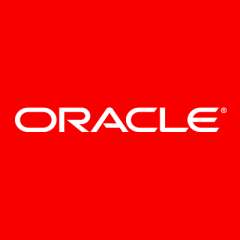What is our primary use case?
We use Oracle Service Bus in the business sector (B2B and B2C). The developers use Windows machines for development and CentOS is the current OS for test, preprod and production environments.
Our primary use case was to implement business processes that can use legacy services (Java, .Net, Package Software). The other main objective was to monitor and analyse our business processes.
How has it helped my organization?
This tool allows us to define our services precisely. Although the XML language and the duo of XSD and WSDL may seem cluttered and inflexible at first glance, it provides us with rigour in our development processes and in defining our services. By using a strict service contract, we were able to reduce the misunderstandings between the development teams and the maintenance costs of our project.
What is most valuable?
Oracle Service Bus is a comprehensive product with many useful features for defining business processes, a powerful mapper, an implementation with many connectors that make life easier.
We were able to easily implement business processes related to sales scenarios.
As I explained earlier, Oracle Service Bus focuses on orchestrating services, but also allows us to compose services. This allows us to improve the granularity of the orchestration.
We have been able to take advantage of the monitoring
The documentation is well done.
What needs improvement?
The product is heavy and requires many resources (CPU, hard disc, memory). The installation is lengthy and complex and looks like an installation from the 90s. The installation of a database (Oracle if possible) and Weblogic is also required.
Today Oracle offers a Docker image that could reduce the installation effort.
In development, we often do not have the equivalent of the machine we can use in production. Because of the resource requirements, it was difficult to test clustering and high availability on development.
For how long have I used the solution?
II have been using Oracle Service Bus for about three years as an integration platform for various integration projects. started using Oracle Service Bus for approximately three years for different projects.
What do I think about the stability of the solution?
With respect to stability, the product is good.
What do I think about the scalability of the solution?
Scalability suffers because this is a very large product. Everything is recorded, and everything is very strict at the technical level. For example, it keeps track of what name is linked to each transaction.
If you have a lot of money, then this is a scalable product.
Being an Oracle product, everything is recorded in a database. That means that there is a bottleneck in terms of scalability.
We have between 10 and 20 developers working on this product. It is now in production but I can't easily estimate the total number of users.
We spent some time testing and found some problems with scalability. It can be difficult because when you test, you don't really simulate the behavior of the end-user. For example, people might generally use it in the morning but then one afternoon, everybody is using it and you don't know why. Ultimately, we had good test results but we were annoyed with the scalability.
How are customer service and support?
We had some issues with support. It was a situation where we were under pressure and it took the technical support too long to reply and too long to solve our problem.
Which solution did I use previously and why did I switch?
I am familiar with a few similar products such as TIBCO, webMethods, and OpenESB.
OpenESB is a similar product that is based on different technology. To scale OpenESB, you need to have a very large machine.
Deploying Oracle Service Bus is a bit rigid if you compare it with similar tools, like OpenESB. For example, when you deploy an application on Oracle, you can deploy a set of services. The important part is that the service is defined when you deploy it. This can be a problem because in some cases, you just want to expose the interface of the service so that it can be used by other services.
Assume that you have services A and B; with some products, you can develop service A without having service B on your system. You simply define a dummy B on your system and after that, you can deploy. This capability means that you have can many teams working concurrently and you can manage many different types of routines because you don't have to access the service itself. You only have to access the interface. However, Oracle Service Bus does not have this capability.
How was the initial setup?
With respect to implementation, this is a very heavy product. It isn't something that is implemented in isolation. Rather, you have to have applications such as a database and an application server, in addition to the Oracle Service Bus itself.
The basic installation will take a day to complete. After that, you need the resources to run that type of software.
The deployment itself is very easy because you just have to install a service on the application server.
What about the implementation team?
Our in-house team was responsible for deployment but I was not there for all of it.
What's my experience with pricing, setup cost, and licensing?
This is a very expensive product and the price varies depending on factors such as the number of processors and the number of users. Our licensing fees are approximately $300,000.
Depending on what other products you license from Oracle, you may have use of Oracle Service Bus. For example, if you use Oracle CRM then you have the right to use the Service Bus as well.
In a case like this, you have a good product, and you can save money on the license that can be put toward development, machines, and resources such as memory.
We target large companies that already have a regular license but if you have an SME or an average company with 100 people or less, then this product is not worth it because the cost is so high. Furthermore, you will be locked in with Oracle.
What other advice do I have?
In summary, this is a very complete product and it works well for us.
I would rate this solution an eight out of ten.
Which deployment model are you using for this solution?
On-premises
Disclosure: My company does not have a business relationship with this vendor other than being a customer.










